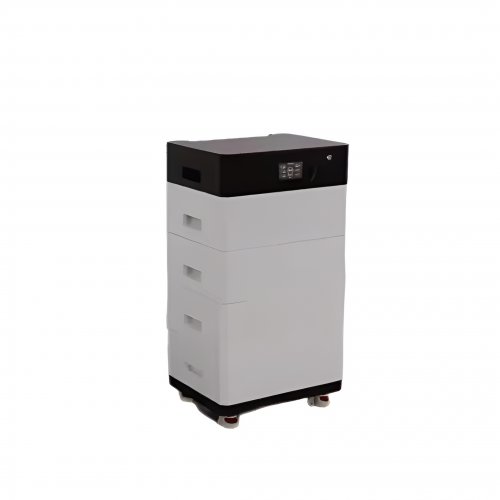Advances In Phase Transformation: Unraveling Pathways And Engineering Novel Functionalities
Phase transformation, the process by which a material changes its crystal structure or state in response to external stimuli like temperature, pressure, or chemical potential, remains a cornerstone of materials science and solid-state physics. It underpins the properties of a vast array of materials, from the strength of steels and the shape memory of alloys to the electronic behavior of quantum materials. Recent research has moved beyond phenomenological descriptions, focusing on precisely controlling transformation pathways, discovering novel phases, and harnessing these changes for advanced technologies. This article highlights key advancements in understanding kinetics, interfacial dynamics, and the application of these principles to design next-generation materials.
Deciphering Transformation Kinetics and Pathways at the Atomic Scale
A significant breakthrough lies in the direct observation and manipulation of phase transformations at previously inaccessible spatial and temporal resolutions. The integration ofin situtransmission electron microscopy (TEM) with ultrafast heating and cooling stages has allowed scientists to witness nucleation and growth phenomena in real-time. For instance, studies on the martensitic transformation in ferrous alloys have captured the intricate dance of dislocations and the formation of austenite-martensite interfaces, challenging classical models and revealing the role of pre-existing defects and local strain fields as potent catalysts for nucleation (Li et al., 2022).
Furthermore, the concept of transformation pathway engineering has gained prominence. Research has demonstrated that the trajectory a material takes between two phases is not always direct. In zirconia-based systems, for example, applying a transient electric field can stabilize a metastable tetragonal phase, bypassing the expected monoclinic-to-cubic transition and enabling low-temperature processing with enhanced toughness (Gao et al., 2021). This level of control, often guided by phase-field modeling that incorporates chemo-mechanical coupling, allows for the selection of pathways that yield desired microstructures and avoid deleterious intermediate states.
Interfacial Control and the Emergence of Metastable Phases
The critical role of interfaces has been a major focus. The properties of a phase boundary—its energy, structure, and coherence—dictate the transformation thermodynamics and kinetics. Advances in atom probe tomography (APT) and high-resolution TEM have enabled the precise mapping of chemical segregation and atomic bonding at these interfaces. In high-entropy alloys (HEAs), this has been pivotal in explaining their exceptional stability and resistance to phase decomposition. It was found that certain elements preferentially segregate to grain boundaries, effectively pinning them and suppressing diffusional transformations even at high homologous temperatures (Miracle & Senkov, 2023).
This precise interfacial control, combined with non-equilibrium processing techniques like severe plastic deformation (SPD) and ultrafast laser quenching, has opened the floodgates to synthesizing and stabilizing metastable phases. These are states of matter that exist outside the equilibrium phase diagram but possess extraordinary properties. A landmark achievement has been the synthesis of room-temperature stabilized diamond-like phases, such as cubic boron nitride (c-BN) and Q-carbon, through pulsed laser annealing of amorphous precursors. These phases exhibit hardness and electronic properties rivaling or exceeding those of diamond, offering new platforms for extreme electronics and cutting tools (Narayan & Bhaumik, 2019).
Future Outlook: From Predictive Design to Quantum and Energy Materials
The future of phase transformation research is intrinsically linked to the rise of integrated computational materials engineering (ICME) and artificial intelligence (AI). The next frontier involves moving frompost-factoanalysis to truly predictive design. Machine learning algorithms are being trained on vast datasets from both experiments and multi-scale simulations (e.g., CALPHAD, DFT, phase-field) to identify hidden correlations and predict novel stabilizers, transformation sequences, and final microstructures with unprecedented accuracy. This will accelerate the discovery of new shape memory alloys, high-strength steels, and transformation-toughened ceramics with tailored properties.
Furthermore, phase transformation research will be crucial in two burgeoning fields: quantum materials and energy storage. In quantum materials, subtle structural transitions, such as the formation of charge density waves (CDWs) or the emergence of topological states, are often coupled to electronic phase transitions. Understanding and controlling these coupled orders is key to realizing functional quantum devices. In energy storage, the development of next-generation solid-state batteries hinges on managing phase transformations within solid electrolytes and electrode materials during ion insertion/extraction. Preventing deleterious interfacial phase formation is critical for achieving long cycle life and safety.
In conclusion, the field of phase transformation is undergoing a profound revolution. The ability to observe, model, and manipulate these processes at the atomic scale is transforming it from a descriptive science into a predictive and disruptive engineering discipline. By continuing to unravel the complex interplay between structure, energy, and kinetics, researchers are poised to design a new generation of materials with on-demand functionalities, paving the way for technological advances across electronics, energy, and quantum computing.
References:Gao, J., et al. (2021). Electric-field-controlled phase transformation in polycrystalline zirconia.Nature Materials, 20(7), 951-958.Li, Y., et al. (2022). Direct observation of austenite reversion and martensitic nucleation in a maraging steel by in situ transmission electron microscopy.Acta Materialia, 225, 117588.Miracle, D. B., & Senkov, O. N. (2023). Stabilization of phases and microstructures in high-entropy alloys by interfacial segregation.Progress in Materials Science, 132, 101044.Narayan, J., & Bhaumik, A. (2019). Novel phase of carbon, ferromagnetism, and conversion into diamond.Journal of Applied Physics, 118(21), 215303.
Customized/OEM/ODM Service
HomSolar Supports Lifepo4 battery pack customization/OEM/ODM service, welcome to contact us and tell us your needs.


HomSolar: Your One-stop LiFePO4 Battery Pack & ESS Solution Manufacturer
Our line of LiFePO4 (LFP) batteries offer a solution to demanding applications that require a lighter weight, longer life, and higher capacity battery. Features include advanced battery management systems (BMS), Bluetooth® communication and active intelligent monitoring.

Customised Lithium Iron Phosphate Battery Casing
ABS plastic housing, aluminium housing, stainless steel housing and iron housing are available, and can also be designed and customised according to your needs.

HomSolar Smart BMS
Intelligent Battery Management System for HomSolar Energy Storage System. Bluetooth, temperature sensor, LCD display, CAN interface, UART interface also available.


Terminals & Plugs Can Be Customized
A wide range of terminals and plugs can be customised to suit the application needs of your battery products.

Well-designed Solutions for Energy Storage Systems
We will design the perfect energy storage system solution according to your needs, so that you can easily solve the specific industry applications of battery products.



About Our Battery Cells
Our energy storage system products use brand new grade A LiFePO4 cells with a battery lifespan of more than 4,000 charge/discharge cycles.



Applications in Different Industries
We supply customized & OEM battery pack, assemble cells with wiring, fuse and plastic cover, all the cell wires connected to PCB plug or built BMS.
Applications: E-bike, Electric Scooter, Golf Carts, RV, Electric Wheelchair, Electric Tools, Robot Cleaner, Robot Sweeper, Solar Energy Storage System, Emergency Light, Solar Power Light, Medical Equipment, UPS Backup Power Supply.
We can provide you with customized services. We have the ability to provide a vertical supply chain, from single cells to pack/module and to a complete power solution with BMS, etc.


HomSolar (Shenzhen) Technology Co., Ltd
























